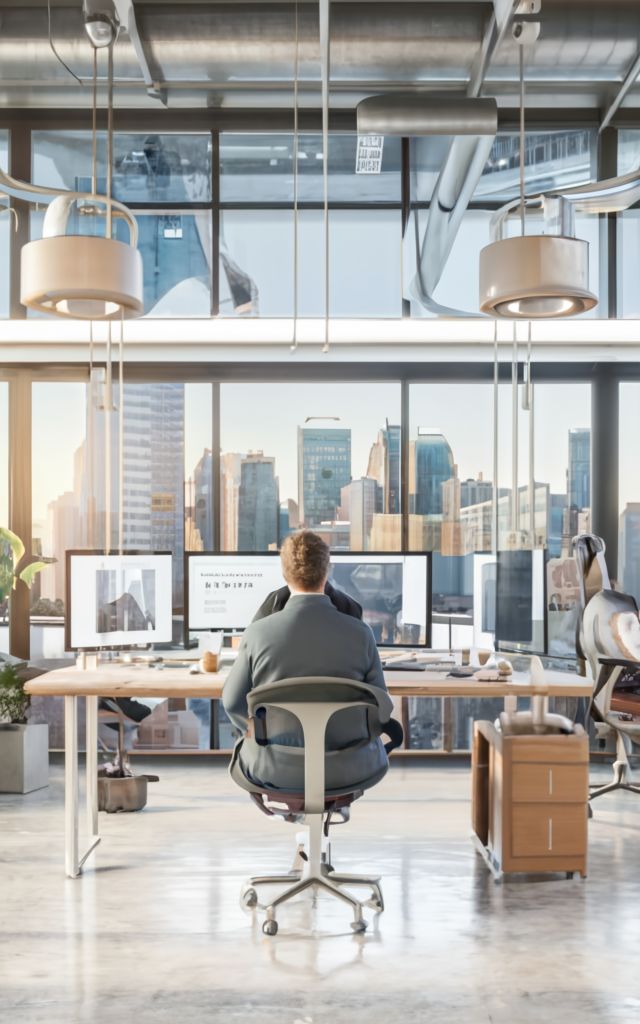What Is Web Design? Comprehensive Guide BY Go Globe

Web design refers to the process of creating and designing websites, encompassing everything from the layout and visual appearance to the functionality and user experience. It involves a combination of artistic creativity and technical expertise to craft websites that are not only visually appealing but also intuitive and user-friendly.
Evolution of Web Design
Early Days of Web Design
In the early days of the internet, web design was primarily focused on creating static web pages using basic HTML and CSS. Websites were often simple and text-heavy, with limited visual elements and interactivity.
Transition to Responsive Design
With the advent of smartphones and tablets, the need for responsive design became apparent. Responsive design ensures that websites adapt seamlessly to different screen sizes and devices, providing users with a consistent experience regardless of how they access the site.
Emergence of User-Centered Design
In recent years, there has been a shift towards user-centered design, which prioritizes the needs and preferences of the end user. User-centered design focuses on creating websites that are intuitive, accessible, and enjoyable to use, ultimately leading to higher levels of user satisfaction and engagement.
Core Principles of Web Design
Visual Hierarchy
Visual hierarchy plays a crucial role in guiding users’ attention and prioritizing content on a webpage. By strategically arranging elements such as headings, images, and calls-to-action, designers can create a clear and intuitive user experience.
Accessibility
Accessibility is an essential aspect of web design, ensuring that websites are usable by people of all abilities. This includes considerations such as providing alternative text for images, using proper heading structures, and ensuring keyboard navigation is possible.
Responsive Layouts
With the increasing variety of devices used to access the internet, responsive layouts have become standard practice in web design. Responsive layouts allow websites to adapt fluidly to different screen sizes, ensuring a seamless user experience across desktops, laptops, tablets, and smartphones.
Performance Optimization
Website performance is crucial for retaining users and improving search engine rankings. Optimization techniques such as image compression, code minification, and caching can significantly improve page load times and overall site performance.
Elements of Web Design
Typography
Typography plays a significant role in web design, as it affects both the visual appearance and readability of a website. Choosing the right fonts and establishing a clear hierarchy of text elements can greatly enhance the user experience.
Color Theory
Color has a profound impact on user perception and can evoke specific emotions or associations. Web designers must carefully consider color schemes to create cohesive and visually appealing websites that align with the brand’s identity and messaging.
Imagery and Graphics
High-quality imagery and graphics can enhance the visual appeal of a website and help communicate its message effectively. From photographs and illustrations to icons and infographics, visual elements play a crucial role in capturing users’ attention and conveying information.
Importance of User Experience (UX)
Usability Testing
Usability testing involves observing users as they interact with a website to identify any usability issues or pain points. By gathering feedback from real users, designers can make informed decisions to improve the overall user experience and optimize conversion rates.
User-Centric Design
User-centric design prioritizes the needs and preferences of the end user throughout the design process. By understanding the target audience and their goals, designers can create websites that are intuitive, accessible, and enjoyable to use.
Trends and Innovations in Web Design
Microinteractions
Microinteractions are subtle animations or feedback mechanisms that enhance user engagement and delight. From animated buttons to loading indicators, microinteractions provide visual feedback and improve the overall user experience.
Immersive Experiences
Advancements in technology such as virtual reality (VR) and augmented reality (AR) are opening up new possibilities for immersive web experiences. Integrating VR and AR elements into websites can create interactive and engaging experiences that captivate users and differentiate brands.
AI-Driven Design Tools
Artificial intelligence (AI) is revolutionizing the web design process by automating repetitive tasks and providing valuable insights into user behavior. AI-driven design tools can generate layout suggestions, personalize content, and optimize user journeys, allowing designers to focus on creative problem-solving and strategic decision-making.
Conclusion
In conclusion, web design is a dynamic and ever-evolving field that plays a crucial role in shaping the online presence of businesses and individuals. By adhering to core principles such as visual hierarchy, accessibility, and user experience, designers can create websites that not only look great but also function seamlessly across different devices and platforms. By staying abreast of emerging trends and innovations, designers can continue to push the boundaries of web design and create immersive digital experiences that resonate with users.





